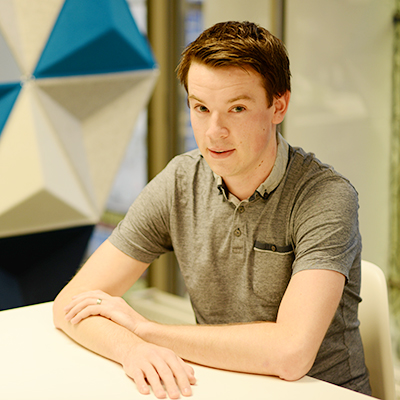3 simulation trends from WinterSim 2019
 Stephen Foggo / Dec 18, 2019
Stephen Foggo / Dec 18, 2019
SIMUL8 Product Developer, Stephen Foggo, shares his takeaways from this year’s Winter Simulation Conference which took place last week in Maryland.
I’ve just returned from my very first trip to WinterSim conference. It was a fantastic opportunity to meet so many of our users in person and finally put some names to faces, as well as meeting people new to the world of simulation!

Over the course of the conference, I managed to find time to sneak away from the busy SIMUL8 stand and listen to some of the talks. As a developer, I was especially looking forward to attending the AI/machine learning sessions which has huge potential benefits for simulation. It was exciting to see people using simulation as a data generator to help train their machine learning models. This data can be used to train the simulation model which should in turn improve predictions. I think this is an inspiring way the two techniques can work together. Another way the techniques can be used in conjunction is through using machine learning to process input data. This processed data can then be used to feed to simulation. For example, some of our users have used this approach to add or update a routing rule to make it more reflective of reality. Understanding a complex system can be a challenge but machine learning can really enhance the conceptual modeling of your simulation project.
Another exciting topic is ‘hybrid modeling’, where more than one modeling discipline is used in the same simulation model. The classic example is to use two different simulation techniques, such as discrete event simulation and agent-based modeling. I’ve regularly combined both these techniques in simulation projects I’ve worked on, especially when looking at patients within the healthcare setting. Discrete event simulation can be used to model the patient flow, while agent-based simulation models the health status and how that changes over time.
However, I was surprised to see someone mention hybrid modeling as a combination of descriptive and prescriptive modeling. This is something I had never thought but definitely fits in the hybrid modeling category. Descriptive modeling is where we use data analysis to understand the current system. Prescriptive modeling is where you apply techniques to predict what is going to happen based on decisions being made. Simulation lends itself well to this approach to hybrid modeling. Each project I have worked on starts with a descriptive element to fully understand the system and find out the important characteristics of the system. After the simulation has been validated, scenarios are then run to see how the system will perform if a certain decision is made, which is the prescriptive piece. It was a really interesting topic and gave me a lot to think about!
Finally, real-time data analysis and digital twins is another popular topic that was discussed at the conference. In an IoT and smart factory world, we’re surrounded by data which has fueled continued interest in digital twins. There were many takes on what a digital twin actually is, but my interpretation is a model which can digitally represent a system in the past, to the current time and even how it will perform in the future. We know from digital twin projects we’ve worked on with our users that when a simulation tool is used to create a digital twin, the benefits of running scenarios and seeing how the system will perform going forward (or how the system would have played out had we decided something different) brings a whole new level to the depth of understanding to the process as a whole. Combining this with some of the machine learning techniques discussed earlier will also help with decision making from the simulation and give real insight into how things will play out in the future.
As you can probably tell, I left the conference with plenty of food for thought and the rest of the SIMUL8 team took away lots of interesting ideas for the year ahead.
Thank you again to everyone who took the time to pop by the SIMUL8 stand to chat with us and I hope to see you all again at a conference very soon!